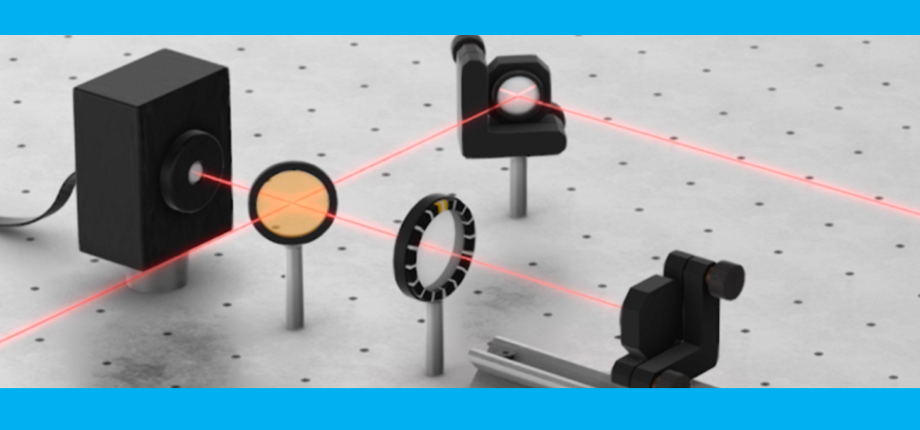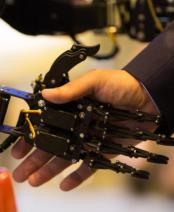PhD award: quantum cascade lasers for secure communications

During his doctorate at The Information Processing and Communications Laboratory (LTCI) at Télécom Paris under the direction of Frédéric Grillot, Olivier Spitz demonstrated the possibility of using quantum cascade lasers to communicate securely in the air, without optical fibres. The Direction Générale de l'Armement (French Defence Procurement Agency) has just awarded him a prize for this thesis, which opens up, among other things, prospects for military operations.
Designed in the 1990s, quantum cascade lasers are capable, thanks to their nanostructure, of emitting light in the mid- and far-infrared ranges, which correspond to wavelengths of a few micrometres to about ten micrometres. "Traditional laser diodes, used in particular in telecommunications, cannot emit at these wavelengths," explains Olivier Spitz. However, one of the advantages of mid- or far-infrared is that it is less absorbing and less sensitive to atmospheric turbulence, which favours its transmission through the air.
These quantum cascade lasers emit a very stable light beam. However, part of Olivier Spitz's thesis was to show that they could be destabilised by re-injecting into the laser a fraction of the light it emitted. "This phenomenon was known for laser diodes, but there was debate in the scientific community about quantum cascade lasers. The output beam is then disturbed and displays "non-linear dynamics", which the researcher studied: aperiodic behaviour, extreme pulses, or even a chaotic signal.
A chaotic signal looks like a noisy, random signal. But it can be defined by its dependence on the initial conditions of the experiment: a tiny change in the parameters and the output signal changes completely. Olivier Spitz characterised this chaos precisely before using it for a secure communication protocol to transmit a message. This protocol consists of three main steps.
First, the sender adds the message to be transmitted to the chaotic signal at the output of a quantum cascade laser using a modulation technique. In this way, the message is hidden in the chaos. The light then travels to the receiver, which injects this light into its own quantum cascade laser. If this laser is identical (or with very similar characteristics) to that of the sender, the phenomenon of "chaos synchronization" occurs: the output beam of the receiver's laser reproduces exactly the chaotic signal of the sender's laser, except for the message that was hidden there! The third step is for the receiver to subtract the light it has received from the output signal of its laser, thus recovering the decoded message.
This protocol had already been achieved with traditional lasers, but Olivier Spitz demonstrated it for the first time with quantum cascade lasers. In theory, it is possible for an outsider to intercept and decrypt the communication, but in practice this requires enormous computing power. Furthermore, quantum cascade lasers are not widely available, making it unlikely that anyone could intercept the message and successfully synchronize the chaos. For the moment, these are laboratory experiments, with transmission distances in the order of a metre and data rates in the order of a megabit per second, which is low, but could be sufficient for operational military applications. "By using these quantum cascade lasers without the security protocol, it is possible to reach data rates of around ten gigabits per second. It is therefore conceivable that these systems could also help to restore communications in disaster areas, after an earthquake that has damaged fibre-based telecommunications systems, for example," stresses Olivier Spitz, currently a post-doctoral fellow at Yale University in the United States.













